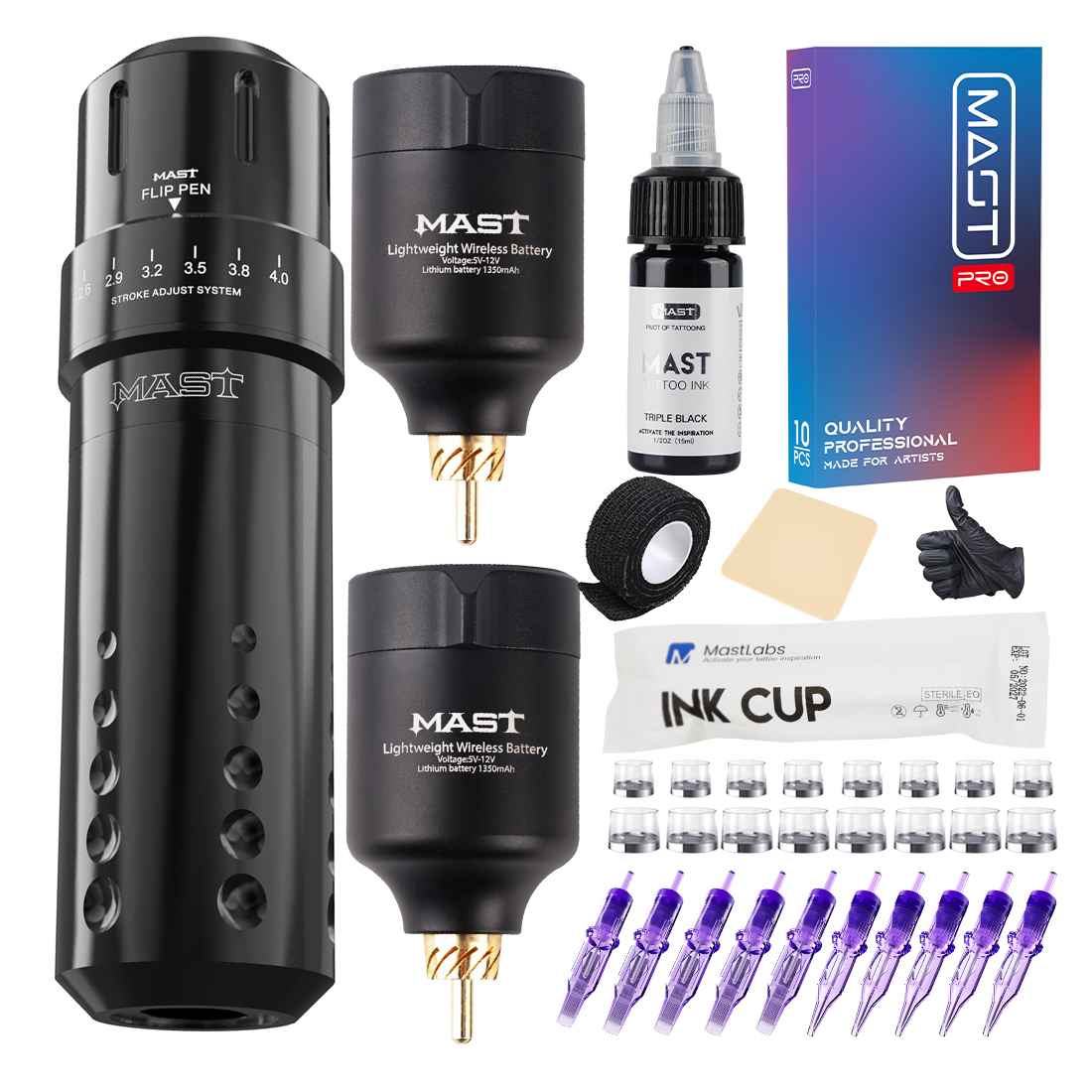Tattoos have been a form of self-expression and body art for centuries.
As the popularity of tattoos continues to grow, so does the curiosity surrounding the process.
One common question that arises is, “Can a tattoo needle hit bone during the tattooing Process?”
In this article, we will delve into the fascinating world of tattooing, explore the anatomy of the skin, and discuss the possibility of a tattoo needle reaching the bone.
A Short Intro
Tattooing is an ancient art form that involves injecting ink into the skin’s dermis layer to create permanent designs or markings.
Skilled tattoo artists use specialized equipment, including tattoo machines and needles, to ensure precision and safety.
Understanding the intricacies of tattooing requires knowledge of both the tattooing process and the underlying structure of the skin.
Understanding Tattooing
Before exploring the possibility of a tattoo needle hitting bone, it’s crucial to comprehend the basics of tattooing.
Tattoo artists create designs by repeatedly puncturing the skin’s outer layer, called the epidermis, and depositing ink into the dermis, the layer beneath the epidermis.
The dermis is composed of connective tissue, blood vessels, and nerve endings, providing a suitable canvas for tattooing.
Also Read: Do You Lose Blood During a Tattoo?
Anatomy of the Skin
The skin, the body’s largest organ, consists of three primary layers: the epidermis, dermis, and hypodermis.
The epidermis serves as a protective barrier against external elements, while the dermis provides structural support and houses blood vessels, hair follicles, and sweat glands.
The hypodermis, or subcutaneous tissue, contains fat cells that help regulate body temperature.
Tattooing Process
During a tattooing session, a tattoo artist utilizes a tattoo machine equipped with multiple needles attached to a needle bar.
The machine rapidly punctures the skin, injecting ink into the dermis.
The depth of the needle penetration depends on various factors, including the desired design, the artist’s technique, and the client’s skin type.
The Role of the Tattoo Needle
Tattoo needles play a crucial role in the tattooing process. They serve as the conduit for delivering ink into the skin.
Tattoo needles are typically made of stainless steel and come in various configurations, such as liners and shaders.
Liner needles have a single needle or a tight grouping, while shader needles have multiple needles arranged in a circular pattern.
Also Read: What Happens if a Tattoo Needle Goes Too Deep?
Penetrating the Skin Layers
While a tattoo needle punctures the skin, it primarily targets the dermis layer, bypassing the epidermis.
The epidermis, consisting of dead skin cells, is continually shed and regenerated.
By depositing ink into the dermis, tattoo artists ensure the longevity of the tattoo design, as the dermis provides a more stable environment for the ink particles.
The Depth of Tattoo Needles
Tattoo needle depth varies based on the desired design, shading requirements, and the tattoo artist’s technique.
Generally, tattoo needles penetrate the skin to a depth of 1 to 2 millimeters.
However, it’s important to note that the human body is not uniform, and skin thickness can vary across different areas of the body.
Can a Tattoo Needle Hit Bone?
While the primary target of a tattoo needle is the dermis layer, it is unlikely for a needle to directly hit a bone during the tattooing process.
The dermis is sufficiently thick to provide a protective barrier between the needle and underlying bone structures.
In addition, it’s crucial to consider that bones lie deeper within the body and are not accessible to a tattoo needle during standard tattooing procedures.
Also Read: Is it safe to get a tattoo if I have a medical condition?
Factors to Consider
Several factors contribute to the depth and intensity of the tattooing process.
The angle at which the needle is held, the pressure applied by the tattoo artist, and the specific area of the body being tattooed all play a role in determining how deep the needle penetrates.
Professional tattoo artists undergo extensive training to master the art of tattooing safely and effectively.
Tattooing Safety Measures
To ensure a safe tattooing experience, reputable tattoo artists follow strict hygiene and safety protocols.
They use sterile equipment, including disposable needles and tubes, and maintain a clean working environment.
Tattoo artists also employ proper hand hygiene, wear disposable gloves, and provide aftercare instructions to clients to minimize the risk of infection.
Also Read: Can a tattoo needle hit a nerve?
Potential Risks
While the risk of a tattoo needle hitting bone is minimal, there are other potential risks associated with tattooing.
These include allergic reactions to tattoo ink, infections, scarring, and skin discoloration.
It’s crucial to choose a professional tattoo artist and follow their aftercare instructions diligently to minimize these risks.
Pain and Discomfort
Tattooing can be uncomfortable, and pain levels vary depending on individual pain tolerance and the location of the tattoo.
Areas with thinner skin or more nerve endings, such as the ribs or inner wrists, may be more sensitive and cause more discomfort.
However, tattoo artists often use techniques to minimize pain, such as topical numbing creams or applying cold packs before tattooing.
Healing and Aftercare
Proper aftercare is essential for tattoo healing and preservation.
Tattoo artists typically provide instructions for cleaning the tattoo, applying ointments or moisturizers, and avoiding prolonged sun exposure or soaking in water.
Following these guidelines can help prevent infections, promote proper healing, and maintain the longevity of the tattoo.
Conclusion
This concludes it on the question, “Can a tattoo needle hit bone during the tattooing process?”
Now, while the possibility of a tattoo needle hitting bone during the tattooing process is extremely very rare (I mean, come on, bones are deep deep deep down beneath the dermis layer of the skin), it’s crucial to understand the intricacies of tattooing and the anatomy of the skin.
Tattooing primarily targets the dermis layer, which provides a stable environment for the ink.
Professional tattoo artists prioritize safety, hygiene, and proper aftercare to ensure a successful tattooing experience.
FAQs
Is it painful to get a tattoo?
Getting a tattoo can be uncomfortable and may cause varying levels of pain.
Pain tolerance varies from person to person, and the location of the tattoo can also influence the level of discomfort experienced.
Can tattoo ink affect bone health?
Tattoo ink remains within the dermis layer and does not directly impact bone health.
However, it’s essential to choose reputable tattoo inks and follow proper aftercare to minimize any potential risks.
Can a tattoo needle break during the tattooing process?
Tattoo needles are designed to be sturdy and flexible. However, in rare cases, a needle may break.
Professional tattoo artists take precautions to minimize such risks and ensure the safety of their clients.
Are there any long-term effects of tattooing on the skin?
While tattoos are generally considered safe, some individuals may experience allergic reactions, scarring, or skin discoloration.
Following proper aftercare and choosing a skilled tattoo artist can help minimize these risks.
Can tattoos be removed if desired?
Yes, tattoo removal is possible but can be a complex and lengthy process.
Methods such as laser tattoo removal or surgical excision may be employed to remove unwanted tattoos, but they may have their own associated risks and considerations.
Remember, getting a tattoo is a personal choice, and it’s important to do thorough research, consult with professional tattoo artists, and make an informed decision before getting inked.






